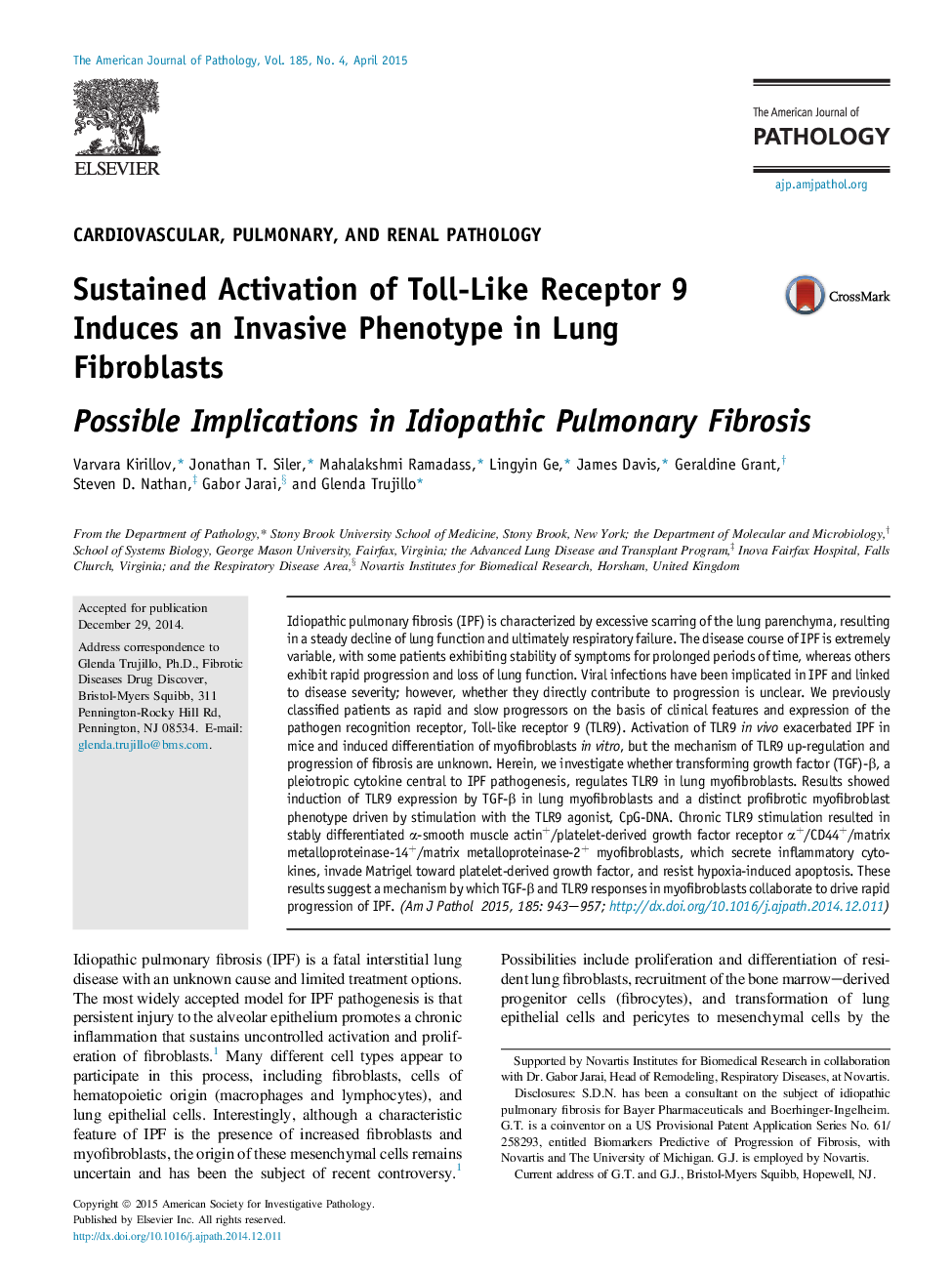| کد مقاله | کد نشریه | سال انتشار | مقاله انگلیسی | نسخه تمام متن |
|---|---|---|---|---|
| 5932560 | 1573381 | 2015 | 15 صفحه PDF | دانلود رایگان |
Idiopathic pulmonary fibrosis (IPF) is characterized by excessive scarring of the lung parenchyma, resulting in a steady decline of lung function and ultimately respiratory failure. The disease course of IPF is extremely variable, with some patients exhibiting stability of symptoms for prolonged periods of time, whereas others exhibit rapid progression and loss of lung function. Viral infections have been implicated in IPF and linked to disease severity; however, whether they directly contribute to progression is unclear. We previously classified patients as rapid and slow progressors on the basis of clinical features and expression of the pathogen recognition receptor, Toll-like receptor 9 (TLR9). Activation of TLR9 in vivo exacerbated IPF in mice and induced differentiation of myofibroblasts in vitro, but the mechanism of TLR9 up-regulation and progression of fibrosis are unknown. Herein, we investigate whether transforming growth factor (TGF)-β, a pleiotropic cytokine central to IPF pathogenesis, regulates TLR9 in lung myofibroblasts. Results showed induction of TLR9 expression by TGF-β in lung myofibroblasts and a distinct profibrotic myofibroblast phenotype driven by stimulation with the TLR9 agonist, CpG-DNA. Chronic TLR9 stimulation resulted in stably differentiated α-smooth muscle actin+/platelet-derived growth factor receptor α+/CD44+/matrix metalloproteinase-14+/matrix metalloproteinase-2+ myofibroblasts, which secrete inflammatory cytokines, invade Matrigel toward platelet-derived growth factor, and resist hypoxia-induced apoptosis. These results suggest a mechanism by which TGF-β and TLR9 responses in myofibroblasts collaborate to drive rapid progression of IPF.
Journal: The American Journal of Pathology - Volume 185, Issue 4, April 2015, Pages 943-957
